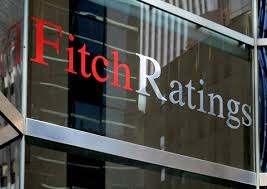Global credit rating agency Fitch Ratings has upgraded Ghana’s long-term foreign currency rating to “B-” from “restricted default” (RD), saying the West African country has made strong progress in resolving its debt challenges.
This development marks a major step in Ghana’s recovery from its worst economic crisis in recent history, which forced the government to restructure billions of dollars in domestic and foreign loans. The country, which is rich in gold and cocoa, was pushed into crisis due to falling commodity prices, rising inflation, and poor revenue performance.
In its report released on Monday, Fitch said Ghana has now “normalized relations with a significant majority of its external commercial creditors,” meaning it has reached agreements with lenders on how to settle or restructure its foreign debts. The agency added that it expects Ghana to fully complete its external debt restructuring by the end of 2025.
The credit rating upgrade is seen as a sign that international investors may start to regain confidence in Ghana, especially as the country works to rebuild its economic credibility.
Ghana defaulted on most of its external debt in late 2022, including Eurobond payments, as part of a broader restructuring process aimed at making its public finances more sustainable. The government also completed a domestic debt swap in 2023, involving pension funds and financial institutions.
The country is currently under a $3 billion bailout programme from the International Monetary Fund (IMF), which requires tough economic reforms and careful fiscal discipline. Ghana has already received over $1.2 billion from the IMF under this programme.
President John Dramani Mahama, who returned to office in January 2025, has promised to create jobs, restore economic growth, and strengthen investor confidence. Speaking during his inaugural address, he said the focus of his administration would be on inclusive economic development, reducing poverty, and addressing youth unemployment.
The Minister of Finance, Cassiel Ato Forson, had earlier announced that the new government would make deep spending cuts this year. He said the goal is to reduce the fiscal deficit, manage inflation, and improve Ghana’s public finances. “We are serious about fiscal discipline. Ghana must live within its means,” he told lawmakers in March.
In another sign of international recognition, rating agency S&P Global Ratings also revised Ghana’s foreign currency issuer rating to “CCC+” from “selective default” in May 2025, citing improved prospects for debt restructuring and enhanced creditworthiness.
Fitch, in its latest report, also gave Ghana a “stable outlook”, meaning it does not expect any immediate upgrade or downgrade. The stable outlook reflects a balance between the risks facing the country and the progress it has made in stabilizing its economy.
However, the agency warned that risks remain, especially if there are delays in completing the external debt restructuring, or if government spending increases without matching revenue growth.
Ghana’s return to the international capital markets may take more time, but experts say the latest rating upgrade could pave the way for future borrowing at lower interest rates, especially for infrastructure and social programmes.
The country’s economy is expected to grow moderately in 2025, supported by the recovery in gold exports, new oil field production, and increased investment in agriculture and manufacturing.
With the latest upgrade, Ghana is now rated B-, still in the “highly speculative” or non-investment grade category, but better positioned than many of its African peers struggling with debt burdens.
The government has welcomed the Fitch report, calling it “an important validation of the hard work being done to put Ghana back on a strong and stable economic path.”
